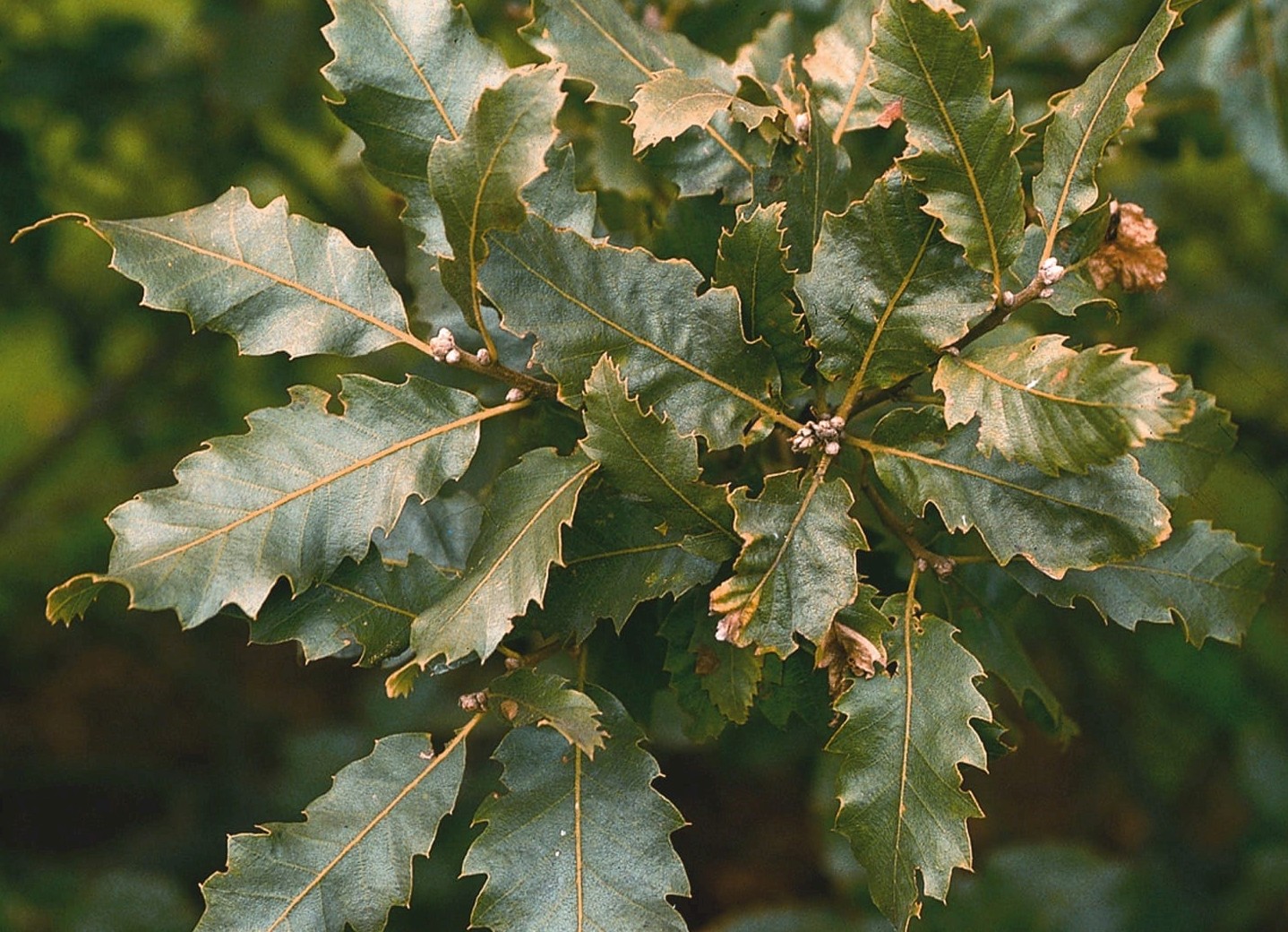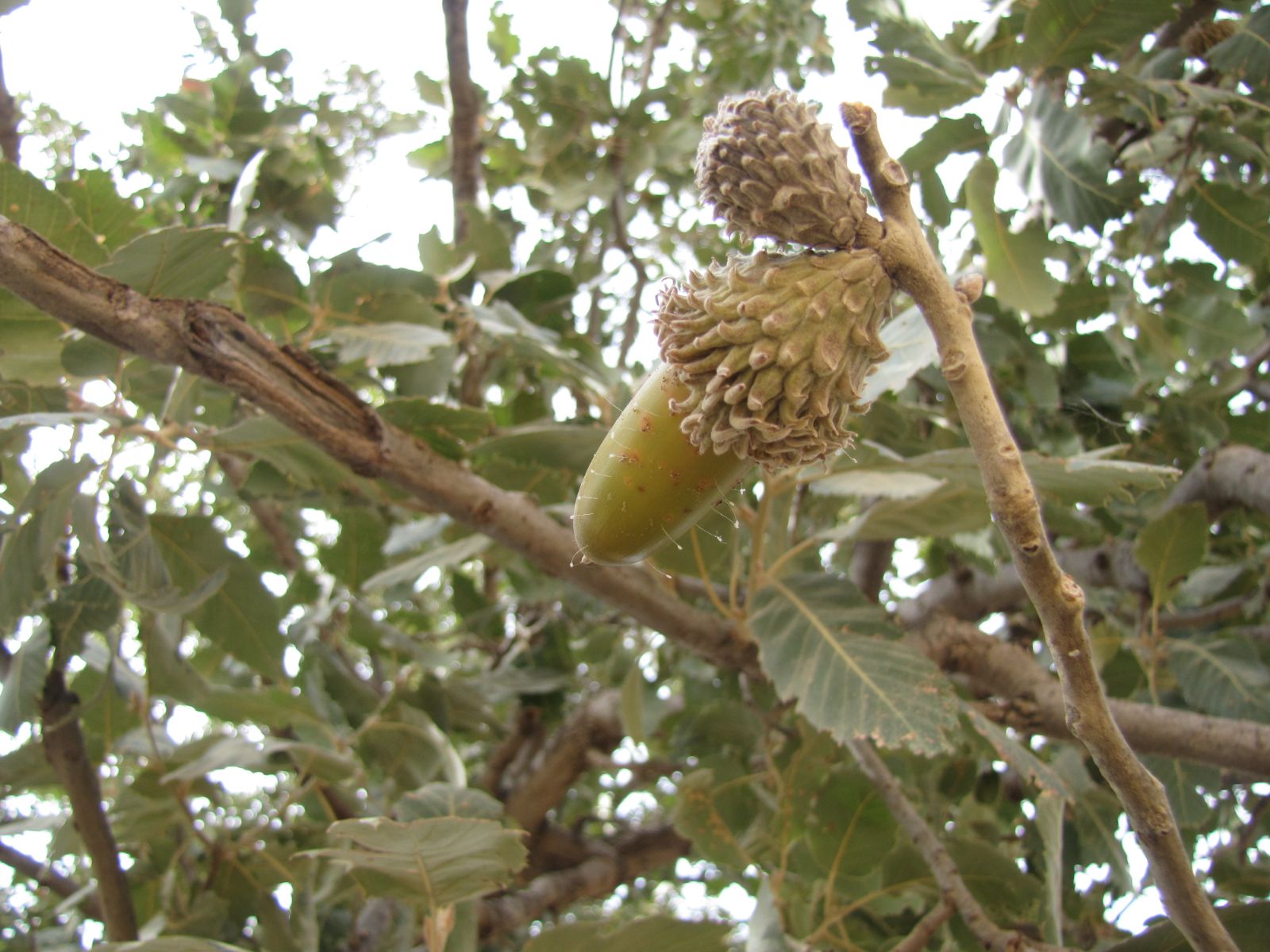Quercus brantii
Sponsor
Kindly sponsored by
The Trees and Shrubs Online Oak Consortium
Credits
Allen Coombes & Roderick Cameron (2021)
Recommended citation
Coombes, A. & Cameron, R. (2021), 'Quercus brantii' from the website Trees and Shrubs Online (treesandshrubsonline.
Genus
- Quercus
- Subgen. Cerris, Sect. Cerris
Common Names
- Persian Oak
Synonyms
- Quercus aegilops subsp. brantii A. Camus
Other taxa in genus
- Quercus acerifolia
- Quercus acherdophylla
- Quercus acrodonta
- Quercus acuta
- Quercus acutifolia
- Quercus acutissima
- Quercus afares
- Quercus affinis
- Quercus agrifolia
- Quercus alba
- Quercus aliena
- Quercus alnifolia
- Quercus aquifolioides
- Quercus arizonica
- Quercus arkansana
- Quercus aucheri
- Quercus augustini
- Quercus austrina
- Quercus × auzendei
- Quercus baloot
- Quercus bambusifolia
- Quercus baronii
- Quercus bicolor
- Quercus buckleyi
- Quercus canariensis
- Quercus canbyi
- Quercus candicans
- Quercus castanea
- Quercus castaneifolia
- Quercus cerris
- Quercus chenii
- Quercus chrysolepis
- Quercus coccifera
- Quercus cocciferoides
- Quercus coccinea
- Quercus conspersa
- Quercus crassifolia
- Quercus crassipes
- Quercus delavayi
- Quercus dentata
- Quercus deserticola
- Quercus dolicholepis
- Quercus douglasii
- Quercus dumosa
- Quercus durifolia
- Quercus eduardii
- Quercus ellipsoidalis
- Quercus emoryi
- Quercus engelmannii
- Quercus engleriana
- Quercus euboica
- Quercus eugeniifolia
- Quercus fabri
- Quercus faginea
- Quercus falcata
- Quercus floribunda
- Quercus frainetto
- Quercus franchetii
- Quercus fruticosa
- Quercus fusiformis
- Quercus gambelii
- Quercus garryana
- Quercus geminata
- Quercus georgiana
- Quercus germana
- Quercus gilliana
- Quercus gilva
- Quercus glabrescens
- Quercus glauca
- Quercus graciliformis
- Quercus gravesii
- Quercus griffithii
- Quercus grisea
- Quercus guyavifolia
- Quercus hartwissiana
- Quercus hemisphaerica
- Quercus × hispanica
- Quercus hondae
- Quercus hypargyrea
- Quercus hypoleucoides
- Quercus ilex
- Quercus ilicifolia
- Quercus imbricaria
- Quercus incana
- Quercus infectoria
- Quercus insignis
- Quercus ithaburensis
- Quercus kelloggii
- Quercus × kewensis
- Quercus kiukiangensis
- Quercus laceyi
- Quercus laevis
- Quercus lamellosa
- Quercus lanata
- Quercus lancifolia
- Quercus laurifolia
- Quercus laurina
- Quercus × leana
- Quercus leucotrichophora
- Quercus × libanerris
- Quercus libani
- Quercus lobata
- Quercus lobbii
- Quercus lodicosa
- Quercus longinux
- Quercus longispica
- Quercus look
- Quercus × ludoviciana
- Quercus macranthera
- Quercus macrocalyx
- Quercus macrocarpa
- Quercus macrolepis
- Quercus marilandica
- Quercus mexicana
- Quercus michauxii
- Quercus mongolica
- Quercus monimotricha
- Quercus montana
- Quercus morii
- Quercus muehlenbergii
- Quercus myrsinifolia
- Quercus myrtifolia
- Quercus nigra
- Quercus × numidica
- Quercus oblongifolia
- Quercus obtusata
- Quercus oglethorpensis
- Quercus oxyodon
- Quercus pagoda
- Quercus palmeri
- Quercus palustris
- Quercus pannosa
- Quercus parvula
- Quercus petraea
- Quercus phellos
- Quercus phillyreoides
- Quercus planipocula
- Quercus poilanei
- Quercus polymorpha
- Quercus pontica
- Quercus prinoides
- Quercus pubescens
- Quercus pyrenaica
- Quercus rehderiana
- Quercus reticulata
- Quercus robur
- Quercus rotundifolia
- Quercus rubra
- Quercus rugosa
- Quercus rysophylla
- Quercus sadleriana
- Quercus salicina
- Quercus sartorii
- Quercus × schneideri
- Quercus schottkyana
- Quercus semecarpifolia
- Quercus senescens
- Quercus serrata
- Quercus sessilifolia
- Quercus setulosa
- Quercus shumardii
- Quercus sinuata
- Quercus spinosa
- Quercus stellata
- Quercus stenophylloides
- Quercus suber
- Quercus subspathulata
- Quercus tarokoensis
- Quercus tatakaensis
- Quercus texana
- Quercus tomentella
- Quercus trojana
- Quercus tungmaiensis
- Quercus turbinella
- Quercus × turneri
- Quercus undulata
- Quercus utahensis
- Quercus utilis
- Quercus uxoris
- Quercus variabilis
- Quercus velutina
- Quercus virginiana
- Quercus vulcanica
- Quercus warburgii
- Quercus wislizenii
- Quercus xalapensis
Shrub or tree 6–15 m × 0.5–0.8 m dbh. Bark greyish brown, rather smooth, becoming deeply furrowed and forming heavy ridges. Crown rounded. Buds conical, angular, with light brown, pubescent scales. Branchlets covered in yellowish brown or grey tomentum. Leaves tardily deciduous, 6–10(–15) × 3–7(–9) cm, ovate to oblong, base rounded or heart shaped, upper surface dull green with sparse stellate hairs or glabrous, lower surface with dense pale yellowish grey stellate hairs, 8–16 secondary veins on each side of the midrib, margins regularly serrate with 5–14 acuminate, scarcely aristate (1–2 mm) teeth on each side of the midrib, apex acute; petiole 0.5–2 cm long. Infructescence to 15 cm long with one or two cupules. Cupule hemispheric, 2–3 × 2.5–4 cm, outside densely pubescent; lower scales rather short and blunt, apical scales with elongated apices that curl away from the acorn. Acorn elliptic, with half to two thirds of its length enclosed in the cupule, 3–5 cm long × 2.3–2.6 cm wide, peduncle short and tomentose, ripening in the second year. (Hedge & Yaltirik 1994; le Hardÿ de Beaulieu & Lamant 2010)
Distribution Iran West & South Iraq North Lebanon Syria North Turkey East & Southeast Anatolia
Habitat Limestone slopes between 350 and 2200 m asl (700 to 1450 m asl in Turkey). Highly drought-tolerant. Found forming pure communities with other Quercus species (Q. boissieri, Q. libani, Q. cerris, Q. coccifera), Pinus brutia, Styrax officinalis, and Paliurus spina-christi.
USDA Hardiness Zone 6
RHS Hardiness Rating H7
Conservation status Least concern (LC)
This species is similar to Q. macrolepis, from which it can be distinguished by the more numerous and smaller teeth, the less tomentose undersides of the leaves, and the middle scales of the acorn cups, which tend to be rhombic in outline, rather than lanceolate or strap shaped. Leaf shape can be similar to Q. infectoria, but Q. brantii’s leaves are more serrate and have a thicker tomentum on the abaxial surface (The Oaks of Chevithorne Barton 2011, le Hardÿ de Beaulieu & Lamant 2010, Bean 1976). Together with Q. macrolepis and Q. ithaburensis, it forms the Valonia or Aegilops group of Section Cerris oaks (see entry in TSO for Q. macrolepis).
Persian oak is the dominant species in both the Zagros and Kurdish mountains (Stephan 2018). It was described in 1840 and named after James Brant, British Consul at Erzerum, who visited Kurdistan around 1839 with Edward Dickson and collected the specimen that was described by Lindley (Bean 1976). Sir Austen Layard, the archaeologist who excavated the ruins of Nineveh in what is now Iraq, sent acorns of Q. brantii to the Horticultural Society of London in 1840s; trees from this seed grew in Britain and produced fruit but no longer survive (Clarke 1988). It was reintroduced into the United Kingdom in 1977 from Iran by Kew’s Fliegner and Simmons expedition (FLSX), though specimens from this source have grown differently and may be intermediates with Q. libani, which Q. brantii hybridizes with in the wild (Grimshaw & Bayton 2009). A tree at Kew from this source is the current UK champion according to the Tree Register (2021), measuring 14 m × 37 cm dbh in 2016. Another specimen from the same accession (FLSX 487), has formed a bushy, rather contorted tree, measuring 6 m × 29 cm in 2010. There have been subsequent introductions from Turkey and the species is grown in several collections in Europe and North and South America. At Arboretum des Pouyouleix a grafted tree planted in 2004 was 10.9 m × 22 cm and had been fruiting for 5 years (B. Chassé pers. comm. 2020). Three trees are recorded at the Jerusalem Botanical Gardens, as well as a hybrid with Q. macrolepis (The Jerusalem Botanical Gardens 2021).






